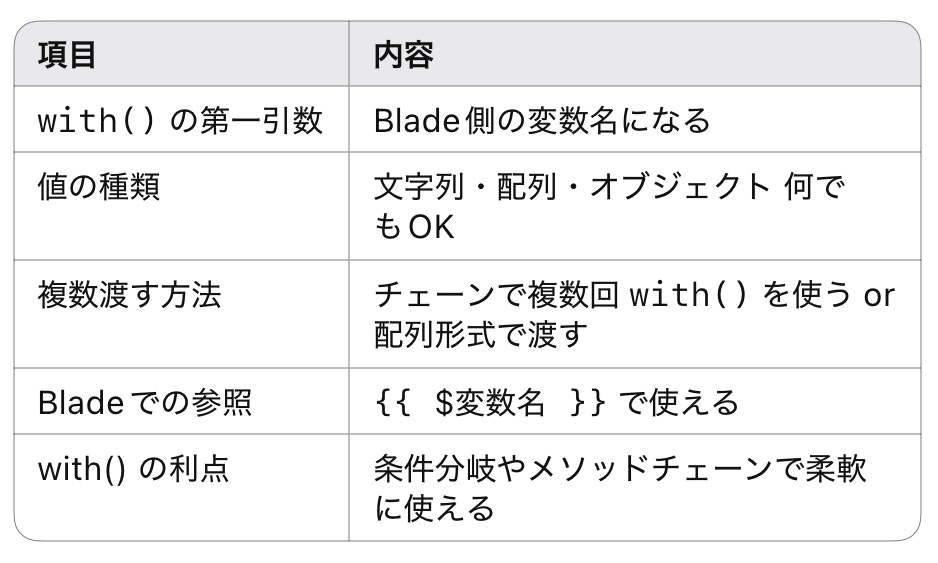はじめに
Laravelでビュー(Bladeテンプレート)に変数を渡す際、よく使われるのがこの書き方:
return view('sample')->with('title', '記事一覧');
最初のうちは「これ、どうやって渡してるの?」「Blade側でどう受け取るんだ?」と疑問に感じる部分ではあります。
この記事では、view()->with()の仕組みと、Blade側での参照方法を、軽く深堀していきます!
①view()->with()の基本構文
return view('viewファイル名')->with('キー',値);
- 'キー'はBlade側で使う変数名になります。
- 値は任意のデータ(文字列、配列、オブジェクトなど)
例:
return view('posts.index')->with('titile', '投稿一覧');
この場合、Bladeテンプレートresources/view/posts/index.blade.phpに$titleという変数が渡されます。
②Blade(View)側での参照方法
Blade側では、with()の第一引数がそのまま変数名として使えるようになります。
<h1>{{ $title }}</h1>
このように、コントローラでwith('title', '投稿一覧')と書けば、Blade側では{{ $title }}で表示できます。
③実務での複数データ渡し(チェーンで渡す)
return view('posts.index')
->with('title', '投稿一覧')
->with('user', $user)
->with('count', 5);
Blade側:
<h1>{{ $title }}</h1>
<p>{{ $user->name }}</p>
<p>{{ $count }}</p>
④データ構造を理解する(裏側では配列に変換されている)
実はwtith()は内部的には$data配列にキーと値を追加しているだけです。
以下のコードと全く同じ結果になります。
return view('posts.index', [
'title' => '投稿一覧',
'user' => $user,
'count' => 5,
]);
つまり、with() は「見た目がチェーンメソッドになっているだけ で、やっていることは同じです。
⑤いつwith()を使うのか?
⑥条件分岐との組み合わせ例(応用)
$view = view('dashboard')->with('user', $user);
if ($user->is_admin) {
$view->with('admin_message', 'ようこそ管理者様');
}
return $view;
Blade側:
<h1>{{ $user->name }}さん、こんにちは</h1>
@if(isset($admin_message))
<p>{{ $admin_message }}</p>
@endif
- このようにwith()は後から動的に追加できるのが強みです。

